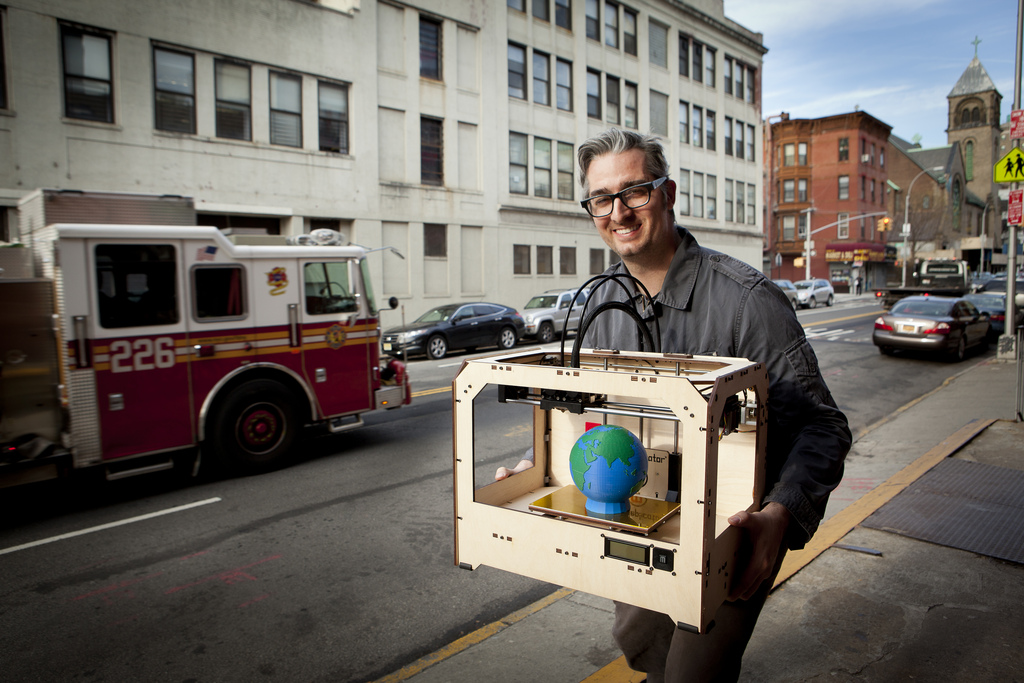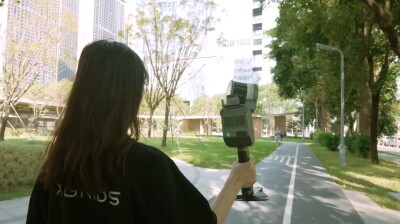A conversation with MakerBot co-founder Bre Pettis
BROOKLYN, N.Y. – MakerBot co-founder and CEO Bre Pettis has a simple message for the 3D data capture community: “I’d just tell them to share,” he said during an interview with SPAR this week. “All that data is on hard drives just starving there. I’d love to see the data they’re acquiring and have them share it and let people see what they could do with it.”
“Show me the data,” the soft-spoken Pettis said with a chuckle. “Show me what you can do. Show me the goods. Prove it. Share. Make the world a better place.”
After all, MakerBot’s Replicator 3D printer is just a piece of the maker community that MakerBot has helped foster since its inception in 2009. There is also Thingiverse.com, where the designs for these things that can be printed are posted and shared. It is a free and open community where people can collaborate on the designs needed by the 3D printers, laser cutters, and other automated tools people can use to make their own things.
What could such a community do with dense point clouds of the type created by surveyors, forensic investigators, paleontologists and others working with laser scanners and photogrammetry? Who knows?
“I want to see the crime scenes,” said Pettis, “the dinosaur bones, the topomaps, the building that needs an extension put onto it so they’ve decided to laser scan it from all kinds of angles. I want to see all that stuff.”
Sure, it furthers his goal of helping people make things and realize their dreams, but he thinks it’s good for the data capture folks, too.
“It’s a calling card, in a way,” he said. “If you scan T-Rexes and share that stuff, then you’ll be the Tyrannosaurus Rex scanner guy. That stuff isn’t out there yet. There are a few skulls out there, but we don’t have the scans of whole skeletons – the rock stars of the digital generation, they haven’t shown up in 3D data acquisition. Who are the rock stars of that community and where do they share their stuff?”
What of the burgeoning copyright issues raised by the scanning, and then replicating, of objects? Pettis refers people to Michael Weinberg’s It Will Be Awesome if They Don’t Screw it Up, posted for free at publicknowledge.org (SPAR wrote about Weinberg’s work here). “That article is great at explaining that issue,” he said.
Nor does he see any significant barrier to the growth of 3D printing. With education and time, and “people doing something special with it,” Pettis sees steadily increasing adoption along the lines of the home computer.
“There were computers that you could have in your home in the mid 1970s, and then it was 10 years before there was one person on your block who had one,” he said by way of example. “Technology adoption just takes time.”
But the 3D data capture community can play a large part in that “something special” piece, too, he said. “I think your audience is in a really good position to get amazing content out there,” he said. “That’s the matrix: taking the world and making it digital and from there you can make more … I’d be really curious about what your community would do with a MakerBot if they all had one.”
Well, what would Bre do with a laser scanner? “I’d love to have one of those,” he said. “I’d do all sorts of things with it. I’d start recording things with it. I’d document my world and share it. I’d use it like a camera.”






